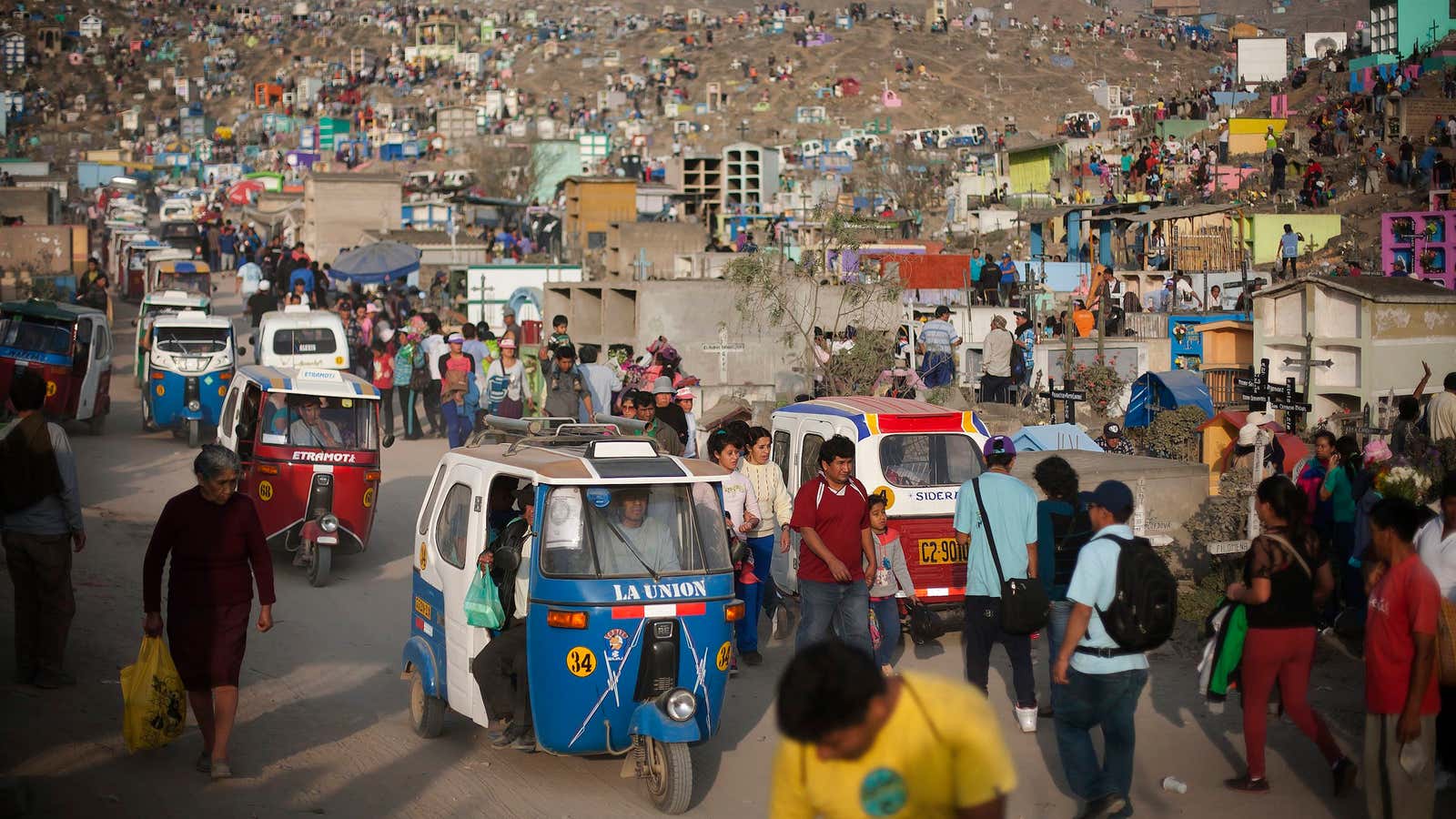In crowded emerging markets like China and India, rickshaws, especially the motorized kind, have gotten a bad rap with governments fretting about congestion and smog. But there is hope that a greener motorized rickshaw could turn official opinions, since the primitive vehicle often provides needed jobs for the poor and a cheap form of transport for small businesses.
As motorized rickshaws (also called “auto-rickshaws” or “tuk tuks”) have become more popular, they have assumed an integral role in the transportation systems of emerging economies. They’ve been introduced in South Africa, Egypt, Kenya, and France in recent years, where they have become a major (and at times, controversial) alternative to more expensive full-sized taxis. They’ve also been in use for years all over Asia, including in China, Thailand, Vietnam, and India, where they handle a significant portion of local commuter traffic.
For example, in India, since bus routes, trains and full-size taxis can only handle so many of the passenger miles required to keep the country’s urban centers connected to their labor force, tuk tuks take up the slack. While a bus line may take a worker most of the way, often the “last mile” of the commute, from the bus stop home, necessitates a trip in a tuk tuk. Auto-rickshaws perform up to 20% of the 229 million motorized trips taken every day in Indian cities. The total number of trips is expected to increase to around 482 million by 2031. Altogether, in Asia, there are 200 million two and three-wheeled vehicles on the road. Current projections estimate that number will reach 550 million by 2035.
Growing populations and more vehicles mean even more trips, and that makes the pollution from these vehicles increasingly problematic. Too many auto-rickshaws feature two-stroke engines, which burn oil and lack catalytic converters, making them up to 13 times more polluting than low-emission four-stroke and compressed natural gas (CNG) models.
That’s why officials in Thailand, China and the Philippines are pressuring owners and operators of the popular motorized rickshaws to cut down on congesting city streets with pollution and traffic. The affordability and versatility of the machines makes outlawing them altogether unrealistic. But there are other ways to lessen their impact. On Nov. 7, Thai police announced that tuk tuks could no longer crowd the streets of Phuket to compete for tourist passengers. In San Fernando, a city in the Philippines, two-stroke tuk tuk drivers are offered cheap loans and free healthcare in exchange for upgrading to four-stroke machines. The Chinese government recently expressed new concerns about the effect of air pollution on citizens, passing a pollution protection act regulating emissions for vehicles including tuk tuks. The act limits carbon emissions across the board and will outlaw high-emission vehicles by 2017. India mandated a switch from gas to natural-gas powered rickshaws in 1998 to lessen pollution. Unfortunately, researchers have found that the carbon footprint of newer CNG models may not be much better than the gasoline models.
Fortunately, there are even cleaner options than CNG or four-stroke upgrades: electric, hybrid, and solar tuk tuks.
Recently, the Mövenpick Resort and Spa in Thailand introduced electric tuktuks at their Karon Beach location in Phuket, replacing their entire fleet of gasoline tukuks. The resort touted the initiative on its Facebook page as its latest sustainability initiative as a Green Globe certified resort. Dubai’s Anantara Palm Resort and Spa introduced electronic tuk tuks as well with similar fanfare, and tour groups from Bonaire to Amsterdam feature electric tuk tuk service in hopes of grabbing the attention of “green” tourists.
Many firms want to extend the trend beyond limited government action or eco tourists. A Japanese firm, Terra Auto, has begun producing electronic tuk tuks for markets in China and the Philippines. Solar models from Australia are coming onto the market. A Dutch engineer has set up production of similar electronic versions in Thailand, and a Thai inventor is doing the same with his own solar tuk tuk models.
But for now, adopting greener rickshaws is an expensive endeavor, for both governments and rickshaw owners. Electric tuk tuks can cost between $3,000 and $5,000 more than conventional models—which go for as little as $2,000. Many drivers don’t own their own tuk tuks, and it’s an open question whether taxi stand bosses would be willing to invest in the expensive technology upfront, even if it means significant gas savings in the long-term.
India, which implemented a successful ban on two-stroke engines and a switch to natural gas versions in the 1990s, is a model for top-down government bans. The San Fernando initiative illustrates what can be accomplished with incentive programs: local Filipino officials doled out medical care and loan swaps for old engines, which incentivized all its drivers to replace every two-stroke vehicle on the road in just 11 years.
